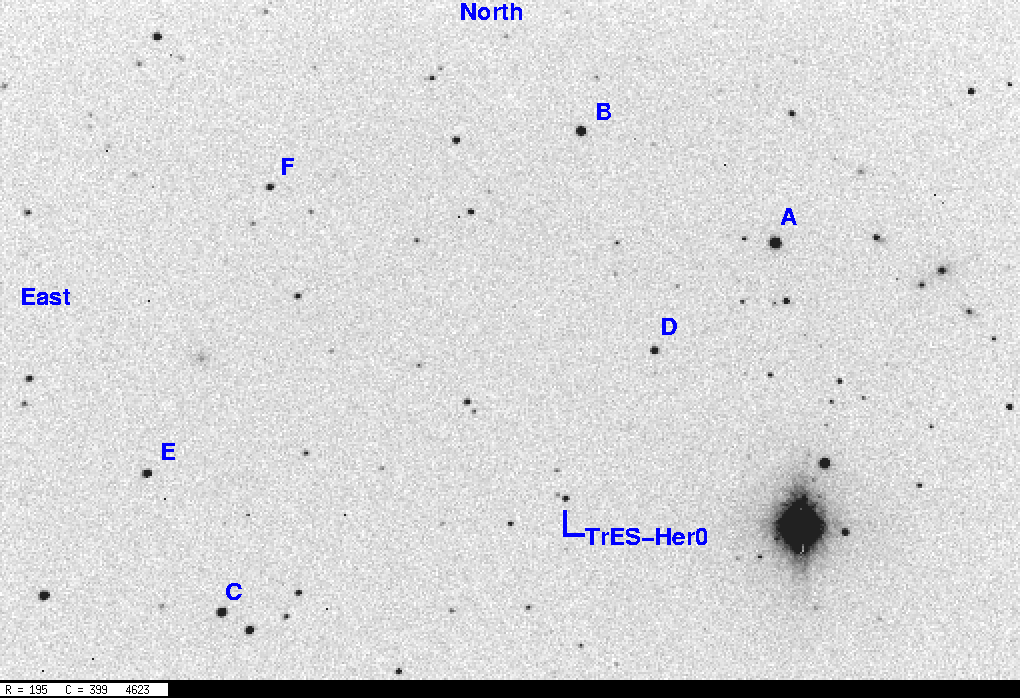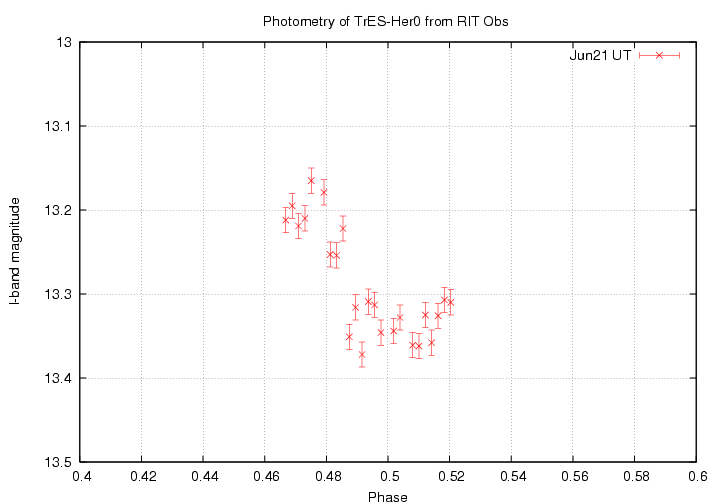
The star TrES-Her0 is a binary system with two low-mass dwarfs in an orbit with a period of 1.12079 days. See astro-ph 0504490 for details. Because this star presents eclipses, if we can acquire radial velocity measurements and photometric measurements, it is possible to determine both the mass and radius of each component.
At the RIT Observatory, physics major George Privon and I have been trying to acquire the photometric measurements necessary to permit accurate physical modeling of the system. We are having a tough time for two reasons.

Even though the companion star is fainter than the target, it can pull the photometric position of the target away from its actual position, causing errors in the measurement of its instrumental magnitude.
Eclipses occur during the dark portion of the night for two consecutive nights, followed by a gap of four days, then two consecutive nights with eclipses, followed by another four-day gap, and so forth.
We have been trying to acquire data since early May, but have been hampered by poor weather and bright moonlight. Our results so far are:
Here are representative graphs of the phased light curve from RIT measurements, using the period and epoch quoted in the astro-ph paper. I-band data around primary eclipse:

I-band data around secondary eclipse:
